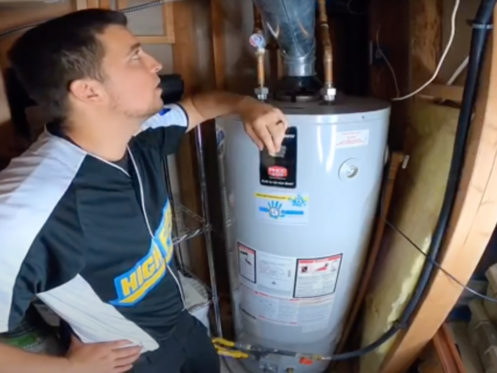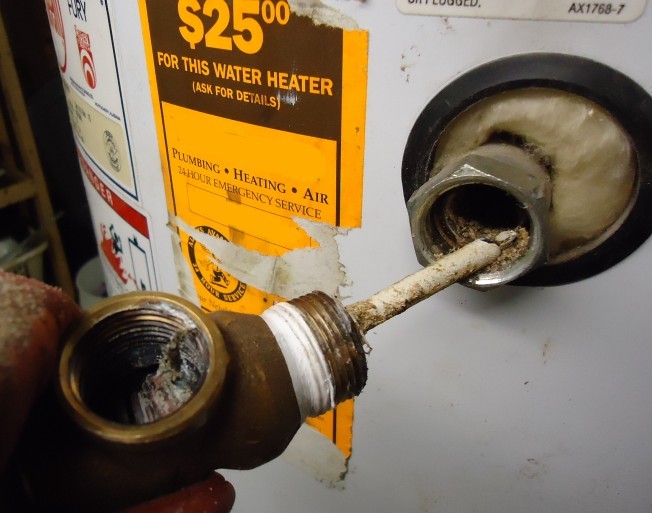Step-by-Step Steps to Caring for Your Home's Hot Water System
Step-by-Step Steps to Caring for Your Home's Hot Water System
Blog Article
Almost everyone will have their own unique idea in relation to How to Maintain Your Water Heater & Prolong its Life.

Hot water is crucial for daily convenience, whether it's for a rejuvenating shower or cleaning dishes. To ensure your warm water system runs efficiently and lasts longer, normal maintenance is key. This short article gives practical ideas and understandings on how to keep your home's hot water system to prevent disturbances and pricey repair work.
Intro
Maintaining your home's hot water system may appear daunting, but with a few basic actions, you can ensure it runs efficiently for several years to come. This guide covers whatever from recognizing your warm water system to do it yourself upkeep tips and knowing when to call in professional assistance.
Value of Keeping Your Hot Water System
Regular upkeep not only prolongs the lifespan of your hot water system but likewise ensures it operates effectively. Ignoring upkeep can bring about lowered efficiency, higher energy bills, and even early failing of the system.
Indicators Your Warm Water System Demands Upkeep
Recognizing when your warm water system requires attention can prevent major issues. Look out for signs such as inconsistent water temperature, strange noises from the heating unit, or rusty water.
Flushing the Water Heater
Flushing your hot water heater eliminates sediment buildup, boosting effectiveness and prolonging its life.
Monitoring and Replacing Anode Rods
Anode poles prevent corrosion inside the container. Evaluating and changing them when worn is important.
Complicated Issues Needing Professional Help
Instances consist of major leaks, electric troubles, or if your hot water heater is constantly underperforming.
Routine Professional Upkeep Perks
Expert maintenance can consist of complete assessments, tune-ups, and guaranteeing compliance with safety and security criteria.
Examining and Adjusting Temperature Level Setups
Changing the temperature setups guarantees optimal efficiency and security.
DIY Tips for Upkeep
You can do several maintenance jobs yourself to maintain your hot water system in top problem.
Looking for Leaks
Consistently check pipes and links for leaks, as these can result in water damages and greater bills.
Comprehending Your Warm Water System
Before diving right into maintenance jobs, it's handy to comprehend the fundamental elements of your warm water system. Commonly, this consists of the hot water heater itself, pipelines, anode rods, and temperature controls.
Month-to-month Maintenance Tasks
Routine month-to-month checks can assist capture small issues before they intensify.
Checking Pressure Alleviation Valves
Examining the pressure safety valve ensures it works appropriately and stops too much pressure build-up.
Insulating Pipes
Shielding warm water pipes minimizes heat loss and can conserve power.
When to Call a Professional
While do it yourself upkeep is advantageous, some problems call for expert experience.
Conclusion
Routine upkeep of your home's warm water system is important for effectiveness, long life, and cost financial savings. By adhering to these tips and knowing when to seek expert aid, you can ensure a trustworthy supply of warm water without unexpected disruptions.
How to Maintain an Instant Hot Water Heater
Before tinkering with your hot water heater, make sure that it’s not powered on. You also have to turn off the main circuit breaker and shut off the main gas line to prevent accidents. Also turn off the water valves connected to your unit to prevent water from flowing into and out of the appliance. 2. When you’re done, you have to detach the purge valves’ caps. These look like the letter “T†and are situated on either side of the water valves. Doing so will release any pressure that has accumulated inside the valves while at the same time avoid hot water from shooting out and burning your skin. 3. When the purge valves’ caps are removed, you have to connect your hosing lines to the valves. Your unit should have come with three hoses but if it didn’t, you can purchase these things from any hardware or home repair shops. You can also get them from retail stores that sell water heating systems. Read the user’s manual and follow it to complete this task properly. When the hosing lines are connected, open the purge port’s valves. 4. You should never use harsh chemical cleaners or solutions when cleaning your unit. Make use of white vinegar instead. It should be undiluted and you’ll probably use about 2 gallons. 5. Now flush your water heater. This task should probably take about 40 minutes. We can’t give you specific directions for this because the procedure is carried out depending on the type, model and brand of your heater. With that being said, refer to the user’s manual. 6. When you’re done draining the unit, you have to turn off the purge port valves again. Remove the hosing lines that you earlier installed on each of the water valves. Put the valve caps (purge port) back in their respective places and be very careful so as not to damage the rubber discs that are found inside these caps. 7. Now that everything’s back in place, check your user’s manual again to find out how to reactivate your water heating system. 8. Once it is working, turn one of your hot water faucets on just to let air pass through the heater’s water supply pipes. Leave the tap on until water flows smoothly out of it. https://www.orrplumbing.com/blog/2014/september/how-to-maintain-an-instant-hot-water-heater/

I discovered that blog entry about What Kind of Maintenance Do Water Heaters Need? while doing a lookup on the web. Be sure to take the opportunity to promote this content if you liked it. I recognize the value of reading our article about What Kind of Maintenance Do Water Heaters Need?.
Schedule A Service Report this page